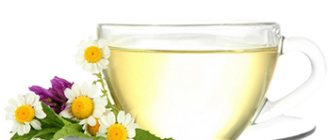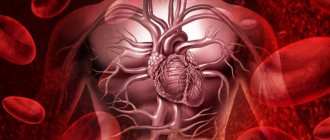This tale is about what herbs are included in monastery tea. Let's talk about which plants can be used to make a similar collection at home, whether it will save you from chronic pancreatitis or from smoking, whether it can cure diabetes and expel worms, and whether it will relieve you of extra pounds of weight. Is it true or false that the herbs that are included in the monastery tea have special healing powers?
Hello friends! If you buy medicinal plants individually at a pharmacy, their price will be significantly lower than ready-made mixtures allegedly prepared according to monastic recipes. Why is this particular brand so popular? What herbs are included in monastery tea, so that instead of 300-400 rubles it starts costing a thousand or more? Maybe it's something mysterious and hard to reach?
It's time to deal with this issue. Do you agree? Then let's go!
Friends, read the article further, there will be a lot of interesting things in it!
And for those who want:“DO YOU FIND OUT WHAT IS KEEPING YOU FROM LOSSING WEIGHT?”
Take the TEST .
By tradition, I will warn you that any herb, like medicine, can only be taken after consultation with your doctor. Don’t believe the inscription “No contraindications!” Any substance, if it has even the slightest ability to influence the functioning of our body, will have contraindications, starting with individual intolerance to individual components, and ending with severe allergic reactions and fatal consequences.
There are no contraindications only for things that do not affect health in any way. If Monastic tea belongs to this category, it means that it is not able to cure anything.
Several myths about monastery tea
Monastery tea - a panacea for all ills?
Monastery tea is credited with many healing properties.
He will allow himself to get in shape. And it will help in the fight against bad habits: it is useful against smoking and alcoholism. Can be used as a prevention and treatment for colds. It will even boost a person’s immunity. What is true and what is a myth - we will talk in more detail later in our article.
Antiparasitic composition - helps against parasites in the stomach and intestines
Nowadays, monastery tea has come into fashion.
Antiparasitic herbal tea can help in carefully removing parasites. Thanks to a wide range of antiparasitic effects, a positive effect on the entire human body is observed:
- constipation is eliminated;
- restoration of tissue fibers is ensured;
- the symptoms of intoxication of the body are relieved;
- the general condition of a person improves.
The beneficial qualities of the antiparasitic herbal infusion are provided by its composition:
- tansy ensures the elimination of parasites with feces through the colon;
- oak bark has an anti-inflammatory effect;
- sage acts as an antifungal agent;
- wormwood gets rid of pathogenic microorganisms and normalizes microflora;
- agrimony helps eliminate toxins and parasites;
- yarrow is used to improve the functioning of the immune system;
- birch buds have a calming effect;
- chamomile is famous for its anti-inflammatory effect and helps restore intestinal microflora;
- calendula is used as a powerful antiseptic;
- peppermint reduces the effects of pain and actively fights fungal formations.
Correct proportions
All the 16 herbs listed above have medicinal properties. The monastic collection of Father George saves from dozens of ailments, because each of its components is taken in a strictly verified and practice-tested quantity.
In order for the actions of herbs to have a result, complementing each other, you need to take exactly 10 grams of chamomile, birch buds, tripoli, buckthorn bark, dried flowers, thyme, motherwort, yarrow and marsh grass, add to them 15 grams of wormwood, 20 grams of rosehip, bearberry , string, immortelle and 35 grams of sage. These components must be mixed and additionally crushed when preparing the decoction. All weights are given for dry raw materials. It is difficult to say why these particular proportions were taken, but herbalists advise observing them.
Helps you quit smoking and quit smoking forever
Monastic tea has a powerful positive effect on the entire body.
The monastic tea is credited with actively helping in the fight against smoking. The tea contains herbs that can remove phlegm, reduce cough and calm the nervous system when quitting smoking.
The drink's producers claim that almost 100 percent of smokers quit buying this tea after drinking it. Even the very smell of a cigarette makes you feel sick.
Monastic tea helps quit smoking thanks to its composition:
- Coltsfoot has an expectorant effect and is prescribed for the treatment of pathologies of the respiratory system;
- lungwort flowers help in the treatment of various respiratory diseases and even asthma;
- black elderberry leaves help normalize metabolism and also help soothe cough;
- Linden blossoms have an analgesic effect, help eliminate toxins and relieve cough;
- St. John's wort flowers directly help eliminate the bad habit of buying cigarettes.
Helps you lose weight
Monastic tea is a medicinal drink based on herbal ingredients.
Monastic herbal tea can be used as an infusion for weight loss. Tea contains:
- fennel eliminates the feeling of hunger and does not allow fatty layers to form;
- chamomile helps eliminate waste and toxins;
- linden has a diuretic effect on the human body;
- black elderberry blossoms help normalize the functioning of the endocrine system;
- peppermint helps suppress hunger;
- senna has a mild laxative effect;
- Dandelion is used as a diuretic.
To obtain the desired effect of normalizing weight, you should not drink tea constantly. It will harm the body
You need to undergo a two-week course of treatment and consult a doctor before doing so. Although herbal infusion has no contraindications, certain herbs can cause harm in certain diseases.
The history of the herbal collection
In his youth, Father George had to be a novice in several monasteries. In one of them he met a schema-monk, who in the world had the title of professor of medicine. He passed on to the young novice the valuable secrets of the folk sages about herbal medicine. On the basis of this knowledge, the monastery collection of Father George was created. The archimandrite took up this work closely at the Holy Spirit Monastery. Here he prepared his medicine, and here he received everyone who wanted to be healed, and he gave everyone an individual recipe. They drove to him from everywhere, not paying attention to the huge queues, because they believed in their salvation. The monastic collection of Father George includes 16 types of herbs. The monks collected some plants from the list in the foothills of the Krasnodar region, and some were grown on the territory of the monastery. The herbs were harvested exclusively by hand, and within the time allotted for each plant. Therefore, the collection of plants extended over the entire growing season. Ready-made herbal mixtures were sold right there in the monastery shop. After the death of Father George, the monks continued this important work for people.
Treats gastritis and ulcers
Its therapeutic effect is achieved through systematic use to treat certain diseases.
Monastic tea is recommended for use for gastritis and ulcers. The minimum course of treatment is 2-3 weeks. After this, you need to take a short break and after a while you can use it again. Before drinking tea, it is recommended to consult a specialist.
The herbal collection consists of a number of useful, pharmaceutical herbs and plants.
Among them:
- calendula, as the main component of the collection, in the treatment of diseases of the gastrointestinal tract;
- flax seeds, which have an enveloping and anti-inflammatory effect that protects the gastric mucosa;
- rose hips, characterized by anti-inflammatory and choleretic effects;
- St. John's wort, which helps restore gastric secretion, improve appetite and heal ulcers;
- cudweed, which helps relieve pain and spasms;
- peppermint, as a powerful pain reliever;
- wormwood for general strengthening of the stomach and intensifying the fight against parasites;
- horsetail, which promotes rapid healing of wounds and ulcers;
- yarrow blossoms, which have a tonic effect. There is also an increase in the process of excretion of gastric juice.
Improves digestion
Monastic tea is a collection of medicinal herbs.
Moreover, for the treatment of each disease there is a special composition. Monastic tea is credited with a beneficial effect on the digestive system. There is a strengthening of the body's protective qualities and normalization of the functioning of the pancreas.
The infusion contains 10 herbs that will have a positive effect only when combined together.
So:
- elecampane promotes normalization and restoration of the organ;
- wormwood is responsible for activating the pancreas;
- sage is used as an antimicrobial agent;
- St. John's wort will relieve heartburn;
- burdock helps eliminate toxins;
- horsetail will help heal wounds;
- the series normalizes the activity of the digestive system;
- calendula is suitable for intoxication of the body;
- chamomile has an analgesic effect and will help heal ulcers;
- Marsh cudweed is responsible for bringing blood glucose levels back to normal.
Diabetes treatment
The secret of monastery tea lies in the balanced ratio of biologically active plants, roots and herbs.
Monastic tea is also recommended for diabetes. In this case, not only normalization of blood sugar levels is observed, but also other positive aspects. So:
- Immunity is strengthened.
- Metabolism is activated and weight is normalized.
- The functioning of the liver, kidneys and gastrointestinal tract is improved.
- The activity of the cardiovascular system improves.
- The risk of complications inherent in diabetes mellitus is reduced, mainly visual impairment.
Treatment of osteochondrosis
Osteochondrosis is a common back disease that worries a very large number of people due to various factors.
In the treatment of such a complex disease as osteochondrosis, you should not hope for a cure by using exclusively healing monastery tea. Although herbal tea will improve your overall health, even in this matter: the number of inflammatory processes in tissues will be reduced; the level of salt deposits will decrease; blood microcirculation will improve.
Without a special professional course of massage, exercise therapy and swimming, it will not be possible to achieve the desired result. Because to stop the process of destruction of intervertebral discs you will have to work hard.
The herbal composition includes:
- oregano, characterized by antispasmodic and anti-inflammatory effects;
- dandelion root, which helps eliminate toxins and salts;
- Rose hips, characterized by a general strengthening effect. Plus, inflammatory processes are eliminated;
- St. John's wort, used as a sedative and analgesic;
- elecampane root, which helps relieve swelling. A slight diuretic and anti-inflammatory effect is also observed;
- pine buds, which have a positive effect on blood counts;
- nettle leaves, characterized by a general strengthening effect;
- lingonberry, used as a natural antioxidant;
- burdock, which can strengthen the immune system.
How to brew correctly
It’s easy to prepare monastery tea, almost the same as regular black tea, which you brew every day: pour one teaspoon of the mixture into a glass of boiling water, and then let it brew, providing it with air. The collection will breathe while giving away power to good use.
There are several brewing methods:
- in a ladle (like coffee) - the collection is filled with cold water and brought to a boil over low heat; remove from heat, cover with a lid, allowing air access, and cool;
- in a cup - pour the mixture into a strainer and pour boiling water over it; By the way, a ceramic strainer is better;
- in a thermos - just like in a cup, only it is brewed several times, and the thermos is not tightly closed.
This tea can be re-brewed. Once the tea has been drained, pour water into the teapot again. The quality of the tea will not be worse. And just as rich.
Monastery tea, after it has been brewed, can be stored in the refrigerator for 48 (no more) hours. Want to warm it up? No water baths or microwaves! Just add boiling water and you are ready to drink.
Approved by the prayers of the monks
It is prepared according to the recipes of the monks, who have long been collecting medicines and treating many diseases.
In the old days, when the healing collection first appeared, there was a possibility that the tea was spoken with prayers. Today it is produced on an industrial scale, so there is no point in hoping for the implementation of ancient ceremonies. These are herbal infusions that can undoubtedly be called medicinal due to the presence of useful components. But to attribute spiritual cleansing and faith to a drink would be a lie. Now only the name remains from the affairs of bygone times.
Reviews from doctors
There are opinions that the effect of the monastery gathering of Father George is a scam, using the concepts of “church” and “monastery” that are holy for many people. More advanced sellers write about a certain medical center where clinical trials of the monastic collection were carried out with the participation of 1000 volunteers. The results were stunning. But the name of this center is not indicated anywhere, and there are hundreds of them in the country, so it is impossible to verify whether studies have been conducted or not. Also, the results of examinations of those 1000 volunteers before and after the experiment are not published anywhere.
Real doctors speak with reserve about the monastery collection. They believe that drinking it is possible and even healthy, since it contains only natural ingredients. But one cannot hope that one remedy will relieve diseases that are completely different in etiology and pathogenesis. Moreover, you cannot start treatment with the collection without clarifying your diagnosis and completely abandoning official medicine. In addition, you need to understand that any product, including the monastic collection, has contraindications regarding individual intolerance to the ingredients, allergic reactions, and the age of the patients.
Organic and eco-friendly collection
Herbs collected in ecologically clean regions, correctly selected
. I would like all herbal teas called “monastery tea” to be environmentally friendly and absolutely harmless to the human body. But in fact, not a single manufacturer indicates exactly where this or that vegetation was collected. This remains at the discretion of the manufacturer. That is why, when purchasing such a product, it is recommended to pay special attention to the reputation of the company that creates the herbal mixture.
Where to get the monastery fee of Father George, price
Internet pages are replete with “profitable” offers to buy magical monastery fees at “low” prices and even with promotions, and only from the manufacturer or its official distributor. In fact, there are no official representatives and no distribution centers, neither church nor monastery, where the real monastic collection of Father George is realized. It is also not sold in pharmacies, as officially stated by monk Irinarh, representative of the Holy Spirit Monastery in the Krasnodar Territory. They do not sell it in the Belarusian St. Elisabeth Monastery, from where there is also an official answer. You can buy a real monastery collection only in the Krasnodar region, in the village of Solenoye, in the Holy Spiritual Monastery.
In addition, there is a blessing for the sale of teas and collections in the Church of the Nativity of the Virgin Mary, in the village of Mostovsky (Krasnodar Territory).
The fixed collection price is 350 rubles per package weighing 100 grams.
The price of tea is 250 rubles per bag weighing 120 grams.
The product comes with detailed instructions telling you how to prepare and take these remedies for various diseases.
Scam or truth, pharmacy deception
The St. Elisabeth Monastery, located in Belarus, most often appears in advertising as the manufacturer of this product.
There is a lot of talk about monastery tea, some think it’s a scam. It is credited with many healing properties for various diseases and pathologies: from heartburn to diabetes. The herbal drink is drunk to reduce body weight and to get rid of the bad habit of smoking. In general, we can say that herbal tea can be used exclusively as an additional course of treatment during drug therapy or for the prevention of diseases. It is impossible to talk about using tea as a full course of treatment. It is important to note that it is recommended to first consult with a specialist.
Who is Father George?
We decided to start answering the questions posed with information about a person whose name is now shamelessly exploited by dozens of Father George’s monastery collection. This healer is not a fictional character for advertising purposes. Father George really existed. In the world his name was Yuri Yuryevich Savva. He was born in Transcarpathia in wartime 1942. From childhood, Yuri, who grew up in a truly believing family, dreamed of serving God. Therefore, after graduating from school, he became a novice at the Transfiguration Monastery in the village of Trebnya.
Under socialism, there was a prejudiced attitude towards churches and monasteries, many of them were closed. In 1962, Yuri Savva went to serve in the army, as his monastery also suffered a sad fate. But already in 1968, he became a monk and received a new name - George. In the desired field, he performed many godly deeds, for which he received high church ranks. It is impossible to imagine that the herbal monastery collection of Father George is a deception, because it was created by a man who wholeheartedly believes in God. In 1987 he became an archimandrite. He was appointed rector of the Holy Ascension parish, in the city of Timashevsk, and in 1992 he became abbot of the Holy Spirit Monastery, where he worked until his death. Father George died in 2011, after a serious illness.
Pharmaceutical herb against stomach diseases, smoking and parasites
Monastic tea is a widely advertised tea drink that contains a number of medicinal herbs.
There is a lot of talk about monastery tea today. It is credited with a huge number of healing properties that make it possible to get rid of many complex diseases. But in fact, you shouldn’t hope to get a positive result solely after using a healthy herbal drink. This is at least not logical. Because complex pathologies such as diabetes or osteochondrosis cannot be cured in this way. In this case, a complex course of treatment and regular therapy is required. Although the tea itself can be drunk for general strengthening purposes.
You can also read about Tibetan tea, sencha, healing tea for colds and herbal tea for all occasions. In addition, it will be interesting to study information about the traditions of English, Moroccan and Chinese tea drinking or the secrets of the Japanese ceremony. It will be interesting to learn about the features of pottery for tea and the differences between green and black drinks.
How to drink correctly
We must not forget that real monastery tea is a medicinal tea party.
It can be brewed once for the whole day. But you can drink (take) no more than four cups per day, and therefore it is recommended to divide all brewed tea into equal doses depending on how many times you drink this tea. Following these simple rules will help you achieve the desired result.
You can add lemon or honey to taste and drink after meals if the treatment objects are above the waist (kidneys, osteochondrosis), before meals if the cause is prostatitis or alcohol addiction. Well, the fees: diabetic, hepatic, pancreatic - practically at the same time as food. However, there is no need to mix teas from different blends.










